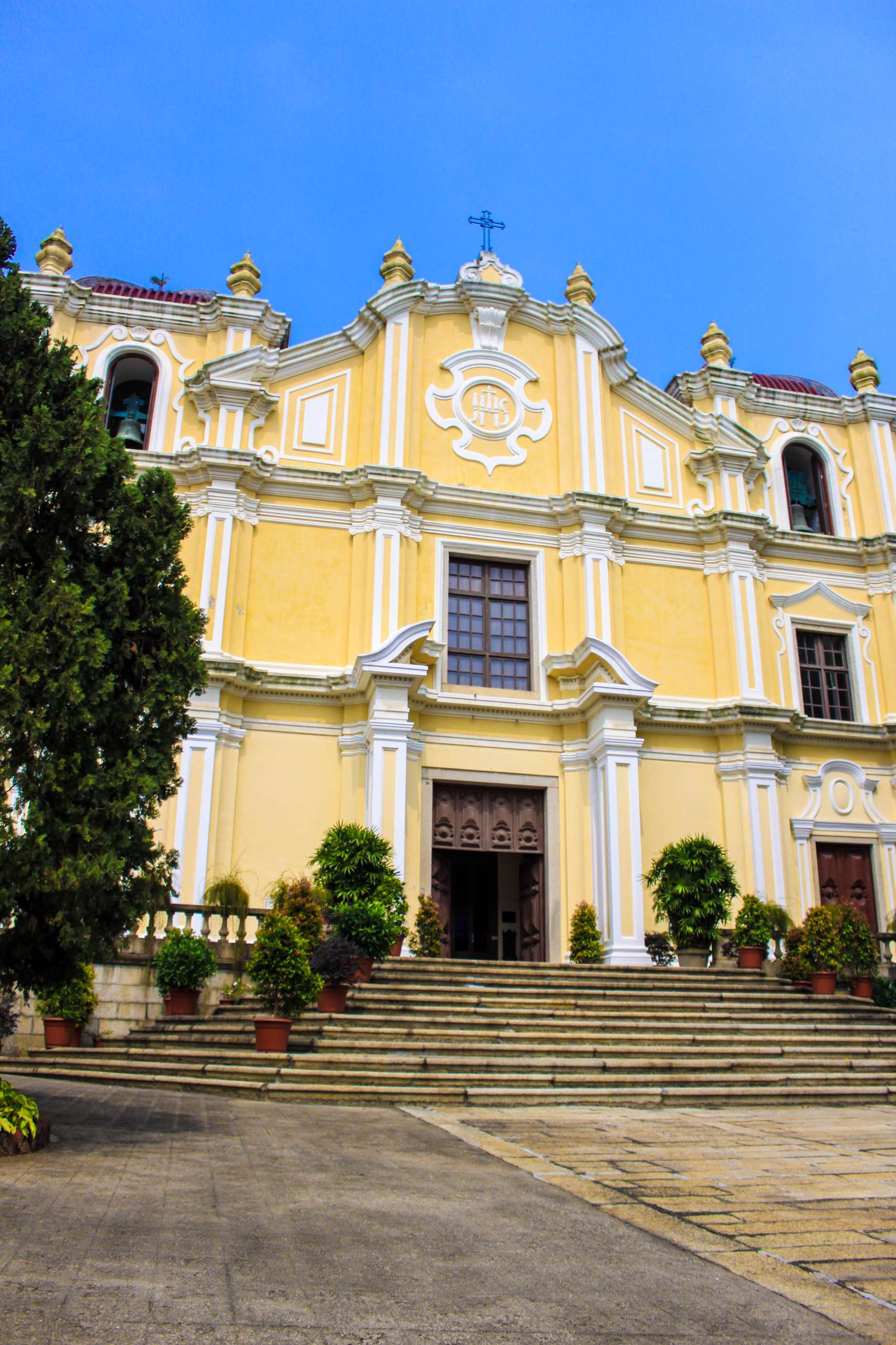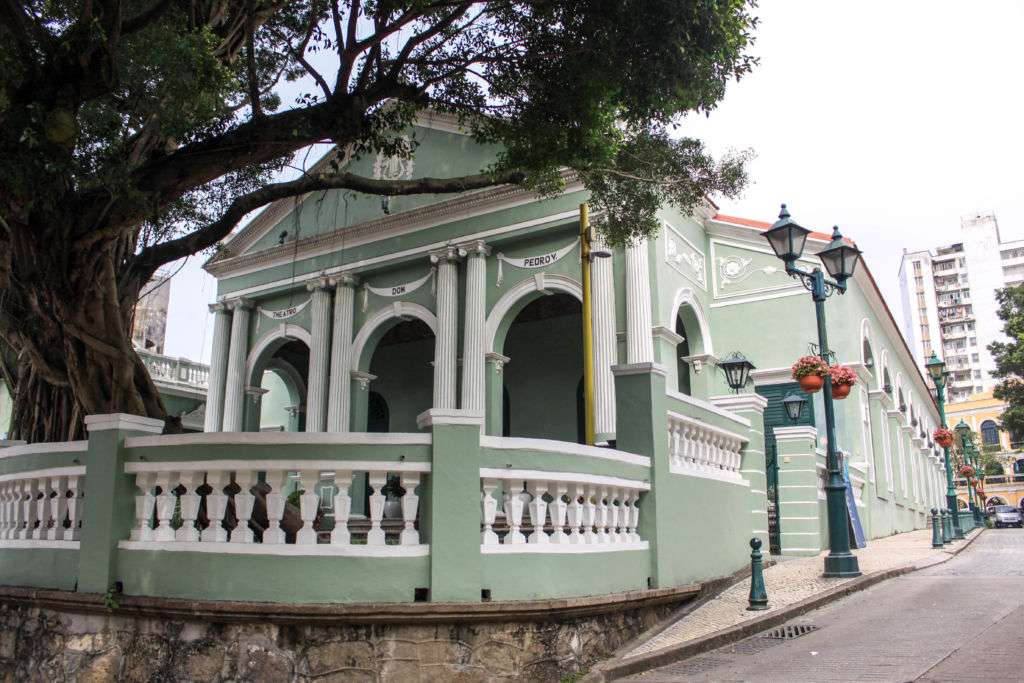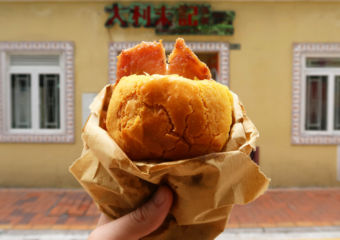Macau is an enclave formerly under Portuguese rule. In December 1999, the Chinese Government formally reclaimed the territory and it is now a special administrative region of the People’s Republic of China, like Hong Kong. For an expat who knows Macau is located in China, arriving here and being able to read street and door signs, restaurant and building names, and to eat almost any kind of cuisine can be strange.
Yes, Macau is unique and mostly because its nature lies in the former exchange of cultural values and principles brought by Portuguese Jesuit missionaries. The combination of those Western beliefs and Chinese culture allowed the region to become increasingly richer. The Portuguese pavement (Calçada Portuguesa) with the colonial and religious architecture form an echo from the past in the city’s older streets. However, you never forget you are not in some old Portuguese town. Historical churches are shaded by high towers of concrete and steel, a reminder of a successful cultural melting pot.
St. Joseph Seminary
Founded in 1728 by Jesuit servicing the then Portuguese Empire, St. Joseph Seminary is the second oldest higher education institution in Macau. After closing in the 18th century and reopening in 1783, Portugal’s Queen Mary I named the place “House of the Congregation of Missions”. It grew in reputation and several Chinese priests graduated from it. The seminary ceased educational activities in 1968 to restart as an investigation center for religious studies, in 2007. It is located on Rua do Seminário, close to St. Lawrence Church.
Largo de Sto. Agostinho
The Portuguese culture can be seen a bit all over the city, starting in the center and moving towards the outskirts. Other than the renowned Ruins of St. Paul’s, the Portuguese were also keen on building military devices to protect the city from outsiders. If one walks from Rua dos Mercadores towards St. Lawrence Church, it is easy to understand why people call it a ‘multicultural city’. Calçada do Tronco Velho, Rua da Alfândega and Rua Central are all worth visiting since they all lead to Largo de Sto. Agostinho, where there is not only a renovated library but also the Casa Ricci (a religious-based institution providing social services), D. Pedro V Theatre, and the Church of Sto. Agostinho. Each corner of that plaza hums with the Iberian Peninsula’s history across time. The theater was the first Western playhouse to be built in China during the 19th century, whereas the church has existed since the 16th century. It was constructed in 1591 by Spanish priests and holds one of the community’s biggest processions, during Easter.
Dom Pedro V Theatre
The theatre was the first Western-style playhouse to be built in China during the 19th century, whereas the church exists since the 16th. It was constructed in 1591 by Spanish priests and holds one of the community’s biggest Easter procession.
Luís de Camões Garden
Luís de Camões is an internationally recognized poet and venerated in Portugal. His mastery earned him a garden in the middle of the city with a statue inside. Luis de Camões Garden (close to St. Anthony’s Church) was built in the 18th century as an annex garden to the mansion of a rich Portuguese merchant, who rented the space to the East Indian Company. It was only in 1885 that the place was bought by the local government, which in turn made it a public leisure space. During the 20th century, the manor house was transformed into a museum with the same name and the whole place became Orient Foundation’s headquarters from 1989 until now.
The Art of Maintaining
Although the city has experienced profound transformations since the liberalization of the gaming industry, it has also been keen to preserve what matters. When strolling through the city, one thing certainly comes to mind: the sculptures all over Macau. These works are hallmarks of the city, but also of Portuguese culture. Luis de Camões’ statue—inside the garden—is signed by Manuel Maria Bordalo Pinheiro, a Portuguese artist from the 19th century. If one looks to Taipa Hill from Macau (right above Nobre de Carvalho Bridge), there is a large white panel 300 meters high, which is also a sculpture by artist Dorita Castel-Branco. The installation features the arrival of the Portuguese to Macau and some other elements, such as Casino Lisboa, a ferry boat, and the Ruins of St. Paul’s. The sculpture was completed in 1985 and it is now a breathtaking element of Macau’s nighttime landscape. When the sun goes down, hike the mountain and get behind the panel to enjoy one of the most beautiful and uninterrupted views from Taipa to the peninsula.
Padre António Teixeira (1912-2003)
A Portuguese priest and historian who heavily documented Macau’s religious history and other aspects of the region. Teixeira arrived in Macau after completing primary school. He was ordained in 1934 and started as a parish priest in St. Lawrence Church. He is said to have been one of Macau’s greatest historians. Among his 123 published works is the “Ecclesiastic Bulletin of Macau Diocese”. He also founded “O Clarim” newspaper (a magazine at the time) and directed the “Macau Archives” and the “Luis de Camoes Institute Bulletin”. Priest Teixeira was also a teacher and a missionary in Singapore. His published works are a good way to know more about the region’s history.
José da Costa Nunes (1880-1976)
A Portuguese bishop in Macau for 20 years. One of the territory’s oldest kindergartens was named after him, having been founded in 1999. D. José da Costa Nunes had a strong influence not only in Macau but also across Southeast Asia, having done missionary work in Malacca, Singapore and Timor. He was elevated to cardinal in 1962 and did major contributions to the reconstruction of schools and churches in the region. Costa Nunes was also a teacher and a musician.
What makes Macau a truly unique city is its mixture of Western and Chinese culture, where Buddhist temples rise beside Catholic churches, where Portuguese seafood rice is served at the same table as noodles with fish balls, and where there is a sculpture of Portuguese explorer Pedro Álvares in a public garden with elderly locals slowly practicing their morning Tai Chi.
For more historical background on the Portuguese presence in Macau, visit the Macao Museum and also the Maritime Museum of Macao.
Macao Museum 112 Praceta do Museu de Macau, +853 2835 7911, www.macaumuseum.gov.mo
Macao Maritime Museum 1 Largo do Pagode da Barra, Macau, +853 2859 5481, www.marine.gov.mo





































